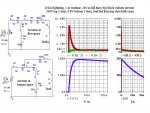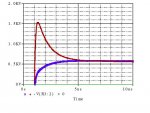JHZR2
Member
- Location
- New Jersey
- Occupation
- Power Systems Engineer
Just got a square d qo surge protection device, to install in my main 200A panel.
Separately, we have been doing some detailed, high resolution studies looking at current balance of parallel DC sources with modest esr differences, and found that there is a position dependence on the bus bar. Apples to oranges, perhaps, but still in the same spirit...
so it got me thinking, shouldn't the surge protector be in the first two spots on the panel to avoid a modest but present resistance in the panel bus bar? Or is the reality that the line resistance (and inductance perhaps more importantly) such a driving factor that the protection will always bleed a surge first?
Perhaps that's academic, but is there a best practice?
thanks!
Manual: http://static.schneider-electric.us...es/Plug-in SPDs for Loadcenters/8226-0003.pdf
Separately, we have been doing some detailed, high resolution studies looking at current balance of parallel DC sources with modest esr differences, and found that there is a position dependence on the bus bar. Apples to oranges, perhaps, but still in the same spirit...
so it got me thinking, shouldn't the surge protector be in the first two spots on the panel to avoid a modest but present resistance in the panel bus bar? Or is the reality that the line resistance (and inductance perhaps more importantly) such a driving factor that the protection will always bleed a surge first?
Perhaps that's academic, but is there a best practice?
thanks!
Manual: http://static.schneider-electric.us...es/Plug-in SPDs for Loadcenters/8226-0003.pdf



